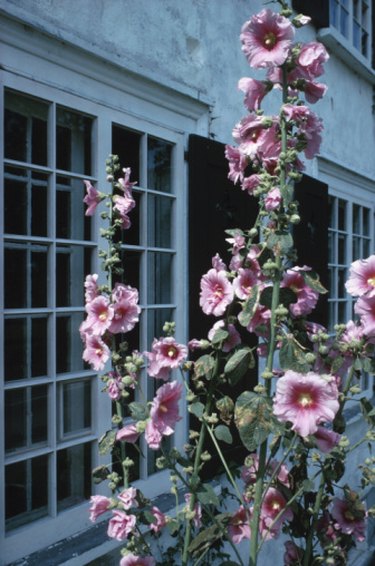Hollyhocks (Alcea rosea) are perennial flowers. Colorful, tall and showy, they are favorites with home gardeners who want to make a statement. Hollyhocks can be grown in U.S. Department of Agriculture (USDA) plant hardiness zones 5 through 9, according to North Carolina State University. Most of the Phoenix metropolitan area is located in USDA zone 9, which means that, while hollyhocks can be grown there, they are going to need plenty of cooling moisture during extended periods of hot, dry weather.

Video of the Day
Things You'll Need
Organic Mulch
Pruning Shears Or Clippers
Support Structure
Watering Tool
Step 1
Plant hollyhocks in a location where they will receive morning sunlight but will be partially shaded in the afternoon. While hollyhocks love sun, the heat of the Phoenix afternoon sun during the hot summer months may be intolerable for some varieties.
Video of the Day
Step 2
Provide support for these towering flowers. Some varieties, such as the "Charter" series, can reach heights of 8 feet. Try planting hollyhocks along a fence, or against the house. You can also place a trellis behind them.
Step 3
Keep the soil moist but do not let standing water develop, as it can cause root rot or rust disease. It is especially important to keep the ground moist during hot weather.
Step 4
Add a layer of organic mulch around the plants to keep the soil cool, stifle weeds and retain moisture. Hollyhocks love manure.
Step 5
Cut back the hollyhocks to the ground in the fall, when the flowers are spent. Carefully remove all plant material from the ground. This will prevent the fungus that causes rust disease (and other fungi as well) from overwintering in the soil.
Tip
Hollyhocks reseed themselves, so you should have new hollyhocks growing in the spring.
Warning
Avoid wetting the leaves during irrigation, as this can lead to rust disease.